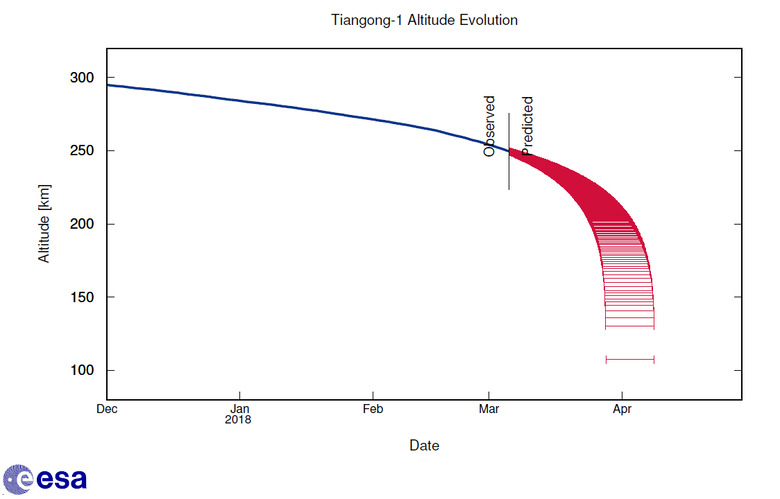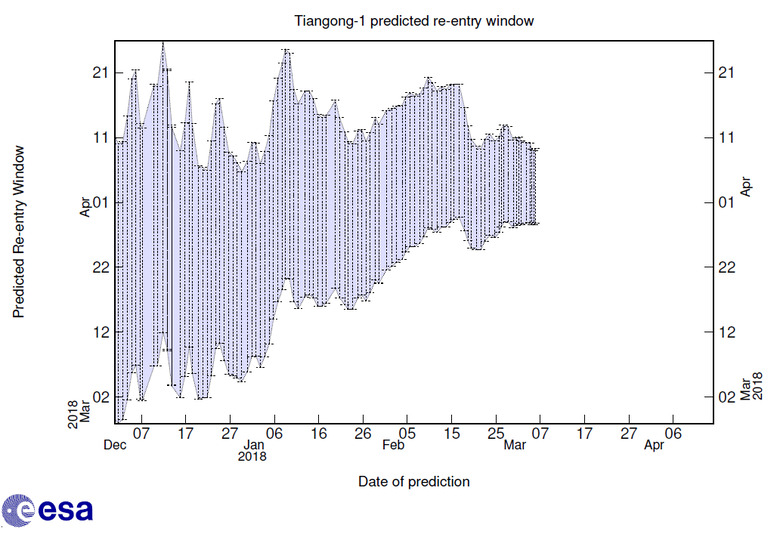TIANGONG-1 Is Falling To Earth, But Don't Worry!
TIANGONG-1 will soon re-enter the Earth's atmosphere and fall to the surface of our planet. The impact of this space craft was calculated to be anywhere between 42.8 degrees North and 42.8 degrees South in latitude. The movement of this space craft into our atmosphere is an uncontrolled entry. Nobody knows exactly where this craft will crash – but DON'T WORRY!
The bad thing about this situation is that the word "uncontrolled" is in it. That's never a great thing when it comes to space exploration and/or objects careening toward our planet. But never you worry, this uncontrolled entry is such that the chances of us all getting smacked in the head are very small.

"Tiangong-1 is a large spacecraft comparable in size and mass to other, frequently used space stations and cargo vessels such as ESA's ATV, the Japanese HTV, Russian Progress and American Dragon or Cygnus," said a representative of the According to the European Space Agency. "From monitoring the controlled reentries of those types of spacecraft, it can be surmised that Tiangong-1 will break up during its atmospheric re-entry and that some parts will survive the process and reach the surface of Earth."
The video above comes from the ESA and shows a craft of similar size re-entering our Earth's atmosphere. As you can see, it only very vaguely resembles the 1998 film Armageddon. This craft wont end all life on our planet. It probably won't even kill anything larger than a few bugs or high-flying seagulls, as it were.

The original plan for this craft was a controlled reentry. Because in March of 2016 this craft ceased functioning but did not break apart in the process, it was from that point forward expected to make an uncontrolled reentry into our atmosphere.
Tiangong-1 (UN COSPAR ID 2011-053A) was launched on the 30th of September, 2011. It was launched with a Long March 2F/G rocket and reached between 300-400km altitude. In January of 2018, the craft orbited at around 280km altitude, and it'll only speed up its fall to Earth from here. We've reached out to the ESA for comment on the situation and have not yet heard back as of publish time.
